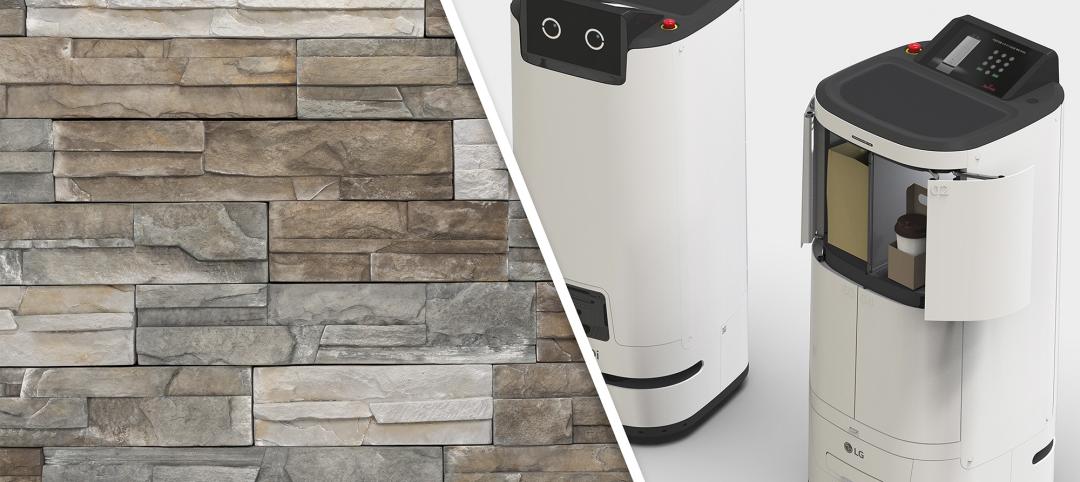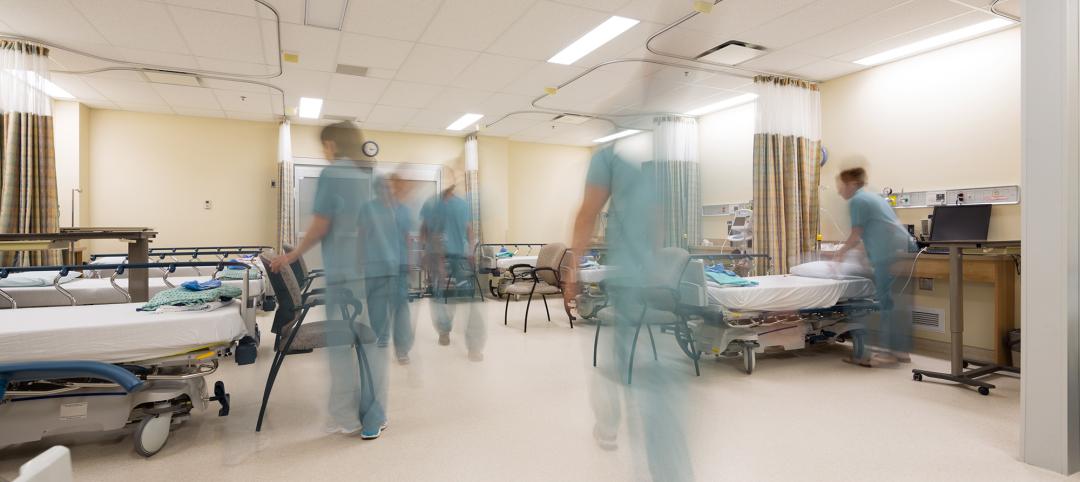Last August 1, Uvalde (Texas) Memorial Hospital broke ground on a 170,000-sf, $83.5 million replacement hospital that is following a building model specifically for rural and underfunded communities, devised by this project’s general contractor Hoar Construction.
Over the past decade, Hoar’s Texas division has built or renovated more than 1.3 million sf of healthcare facilities using a preconstruction formula that helps rural healthcare providers overcome budget barriers and win over community and political support for funding on capital improvement projects.
“Rural healthcare is in crisis right now,” observes Coker Barton, Hoar Construction’s Senior Vice President of Healthcare. “We’ve seen 126 rural hospitals across the United States close since 2010. Rural healthcare is unique in that it really does take a village to get a project across the finish line, or even started for that matter. After completing our first project, we saw an opportunity to really dig in and help these healthcare providers early in the process so they could make the most of their budgets and provide that much-needed care to their local communities.”
Some recent examples where the Hoar applied its roadmap include:
•Faith Community Hospital in Jacksboro, Texas, a $28 million facility that, when it opened in September 2015, replaced a 60-year-old building that nearly closed due to bad management and unsafe conditions.
Through value engineering Hoar found $100,000 in savings that allowed this project to move forward. The hospital also did a needs assessment before going to the voters for funding, which they had been rejected previously. (To build grassroots support for a new hospital, Faith, spearheaded by its CEO Frank Beaman, boosted community engagement and education, and hired additional personnel to follow-up with patients.)
This is the first rural/sole provider hospital in the state with a geothermal water heat pump, which helps reduce operating costs.

Faith Community Hospital had to overcome community opposition to its cost.

•Mountain Lakes Medical Center, a 67,000-sf critical access hospital in Clayton, Ga., whose construction was $2 million over budget when Hoar came on board. Hoar saved this project nearly $400,000 by switching to exterior insulation and finish system (EIFS) panels, from more expensive exterior cladding made by Trespa International. Hoar also streamlined trade partners’ work to ensure faster delivery of the project, which was completed in October 2017.
Uvalde, Texas, population 16,000, is a 7.6-square-mile town about 80 miles west of San Antonio. Its current hospital—which will be torn down once the new one is ready for occupancy in September 2021—was built in 1972. The U.S. Department of Agriculture’s rural development office is financing the new hospital’s construction through $58.5 million in direct funding and $16.5 million in guaranteed loans. The hospital intends to issue 40-year bonds to raise $75 million.
Finding potential financing vehicles is part of the roadmap Hoar Construction has devised for community and rural hospitals that are often at “a natural disadvantage for borrowing money.” Those vehicles can include bond financing, the Federal Housing Administration’s Section 242 Mortgage Insurance program, and USDA’s Communities Facilities loan program.
Hoar has mapped out how a project’s preplanning, preconstruction, and construction stages should move forward. For example, it says that hospitals need to “consider your ideal facility 50 years from now, cost implications, possible interruptions, and long-term growth.” It states that operational planning is “key” to completing a successful project. “Consider the relocation of equipment and transfer of staff and IT infrastructure to ensure a seamless move.”

Mountain Lakes Medical Center connects its patients with the outdoors.

Perkins and Will designed Uvalde Memorial. Hoar’s model takes into account programming and project definition, architectural design and engineering, and the development of construction contract documents. The success of this process, it says, rests on thorough and timely input from hospital personnel, and early constructability input related to the use of cost-effective building systems that balance initial cost and long-range operational expenses.
“The roadmap really champions the idea of a collaborative design review, which include great partners like Perkins and Will and even our trade partners to come up with a workable plan and meet the challenge of how we’re going to build a hospital or other healthcare facility,” says Hoar’s Barton. “This way, we can price out every process, material, and design element as the architect draws it. By having daily or weekly design meetings, we can understand what they’re drawing and what our owner is seeking in the design. If something is over budget or there’s an issue that could negatively impact the schedule, we can identify it in real time and work with the design team to find a better option.
“Essentially, we’re making a series of small corrections during the design phase, instead of wholesale rework during construction. This also helps determine the best workflow and maintain the construction schedule,” Barton says.
Hoar has found that the CM-at-Risk delivery method works best for these kinds of projects “because we can get involved early and be part of the team, which helps with the budget and schedule,” explains Barton. Understanding project expectations early allows the team to eliminate waste and produce more accurate documents and cost estimates. Hoar’s roadmap focuses specifically on MEP systems and specifications, “which are the largest driver of construction costs and can create operational issues when MEP systems are not sized appropriate[ly] for your facility.”
The new hospital in Uvalde will include 132,870 sf of institutional space, 31,872 sf of administrative space, and a 11,500-sf central utility plant. The replacement hospital will house an emergency department, physical and occupational therapy department, a 25-bed medical surgical inpatient unit, and 16 outpatient beds.
Related Stories
Sponsored | Healthcare Facilities | Aug 8, 2024
U.S. healthcare building sector trends and innovations for 2024-2025
As new medicines, treatment regimens, and clinical protocols radically alter the medical world, facilities and building environments in which they take form are similarly evolving rapidly. Innovations and trends related to products, materials, assemblies, and building systems for the U.S. healthcare building sector have opened new avenues for better care delivery. Discussions with leading healthcare architecture, engineering, and construction (AEC) firms and owners-operators offer insights into some of the most promising directions. This course is worth 1.0 AIA/HSW learning unit.
Products and Materials | Jul 31, 2024
Top building products for July 2024
BD+C Editors break down July's top 15 building products, from Façades by Design to Schweiss Doors's Strap Latch bifold door.
Smart Buildings | Jul 25, 2024
A Swiss startup devises an intelligent photovoltaic façade that tracks and moves with the sun
Zurich Soft Robotics says Solskin can reduce building energy consumption by up to 80% while producing up to 40% more electricity than comparable façade systems.
Great Solutions | Jul 23, 2024
41 Great Solutions for architects, engineers, and contractors
AI ChatBots, ambient computing, floating MRIs, low-carbon cement, sunshine on demand, next-generation top-down construction. These and 35 other innovations make up our 2024 Great Solutions Report, which highlights fresh ideas and innovations from leading architecture, engineering, and construction firms.
Healthcare Facilities | Jul 22, 2024
5 healthcare building sector trends for 2024-2025
Interactive patient care systems and trauma-informed design are among two emerging trends in the U.S. healthcare building sector, according to BD+C's 2024 Healthcare Annual Report (free download; short registration required).
Healthcare Facilities | Jul 18, 2024
Why decarbonizing hospitals smartly is better than electrification for healthcare design
Driven by new laws, regulations, tariffs, ESG goals, and thought leaders in the industry itself, healthcare institutions are embracing decarbonization to meet 2050 goals for emissions reductions.
Healthcare Facilities | Jul 16, 2024
Watch on-demand: Key Trends in the Healthcare Facilities Market for 2024-2025
Join the Building Design+Construction editorial team for this on-demand webinar on key trends, innovations, and opportunities in the $65 billion U.S. healthcare buildings market. A panel of healthcare design and construction experts present their latest projects, trends, innovations, opportunities, and data/research on key healthcare facilities sub-sectors. A 2024-2025 U.S. healthcare facilities market outlook is also presented.
Healthcare Facilities | Jul 11, 2024
New download: BD+C's 2024 Healthcare Annual Report
Welcome to Building Design+Construction’s 2024 Healthcare Annual Report. This free 66-page special report is our first-ever “state of the state” update on the $65 billion healthcare construction sector.
Healthcare Facilities | Jun 18, 2024
A healthcare simulation technology consultant can save time, money, and headaches
As the demand for skilled healthcare professionals continues to rise, healthcare simulation is playing an increasingly vital role in the skill development, compliance, and continuing education of the clinical workforce.
Mass Timber | Jun 17, 2024
British Columbia hospital features mass timber community hall
The Cowichan District Hospital Replacement Project in Duncan, British Columbia, features an expansive community hall featuring mass timber construction. The hall, designed to promote social interaction and connection to give patients, families, and staff a warm and welcoming environment, connects a Diagnostic and Treatment (“D&T”) Block and Inpatient Tower.

















